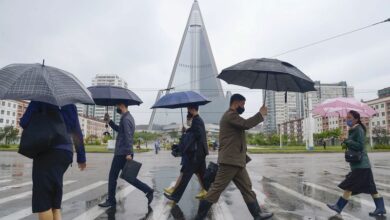Record numbers at Singapore Airshow as post-COVID boom raises hopes

By Xinghui Kok
SINGAPORE (Reuters) -Record numbers attended the trade section of the first fully post-pandemic Singapore Airshow this week, with exhibitors and delegates optimistic about the aviation industry despite suppliers’ struggles to keep up with rebounding travel demand.
Close to 60,000 people attended the four trade days of the show, nearly four times as many as in 2022 when foreign visitors required daily rapid tests for COVID-19, and more than the 54,000 who visited in 2018. The 2020 edition was rocked by last-minute cancellations as the virus spread around the world.
Outside Asia’s largest air show, transport problems snarled arrivals and departures, especially during the first days. On Tuesday, lines for free shuttle buses to the Expo public transport hub led to waits as long as three hours in temperatures over 30 degrees Celsius (86 degrees Fahrenheit) and taxis to the city cost as much as three times the usual fare.
“‘Worst transport experience’: Crawling traffic, long waits for rides frustrate Singapore Airshow visitors”, ran a headline in local newspaper the Straits Times.
Leck Chet Lam, managing director of show organiser Experia, blamed “higher attendance than in previous editions”.
In the air-conditioned display space, commercial exhibitors hawked planes, drones, surveillance technology, services and equipment. The displays attracted buyers and enthusiasts, with the Korea Aerospace Industries booth drawing a line on Wednesday for attendees to get pilots’ autographs and pose for selfies.
More than 1,000 commercial and defence companies from 50 countries participated in the show, organisers said.
Russian companies did not take part amid the war in Ukraine but Israeli companies Israel Aerospace Industries and Rafael Advanced Defense Systems, which dropped out of the Dubai Airshow in November amid the Israel-Hamas war in Gaza, attended.
“The general mood is extremely positive but also very demanding,” said Dennis Kohr, head of corporate sales Asia-Pacific for aircraft maintenance provider Lufthansa Technik Group.
“It’s the first air show after the pandemic; there is not only a huge demand for air travel, but also huge demand for MRO services,” he added, referring to maintenance, repair and overhaul.
Natasha Pheiffer, regional managing director for Asia at British defence firm BAE Systems (LON:BAES), said it was great to see attendees face to face again.
“We had a really busy week … discussing future air capability, our space and autonomous air technologies, our cyber, electronic warfare, sea, and land offering and our presence across Asia,” she said.
AERIAL DISPLAY
Delegates stepped into the tropical heat for around an hour of aerial displays each day, including demonstration flights by air force teams from Singapore, South Korea and India, among others, and a fly-by by the C919, made by China’s COMAC. It was the first flight outside Chinese territory for COMAC’s homegrown jet.
COMAC was also the first company to announce orders at the show, flagging a deal with Tibet Airlines for 40 C919 single-aisle planes and 10 ARJ21 regional jets, plus six ARJ21s for China’s Henan Civil Aviation Development and Investment Group.
Shortly afterwards, Royal Brunei Airlines said it was ordering four Boeing (NYSE:BA) 787-9 Dreamliners.
Airbus announced an order for five A350 freighters and three A330neo widebody passenger jets from Taiwan’s Starlux Airlines. Airbus also had a provisional deal with Vietnamese budget carrier VietJet for 20 A330neo wide-body airliners.
Sustainability was in focus, with Singapore announcing a green jet fuel mandate to be funded by a levy on travellers and air show organisers stressing the importance of protecting the environment, but the industry remains divided over how to achieve its goal of net zero carbon emissions by 2050.
Supply chain issues clouded some of the show’s optimism, with exhibitors citing long lead times and high costs, which have dogged the industry since COVID and worsened after Russia invaded Ukraine. The problems have been especially acute for raw materials such as aerospace-grade metals.
Still, Paul Bolton, chief operating officer of First Aviation Services, was hopeful the worst was over and that growing demand would lead manufacturers back to aerospace production.
“It will get better in maybe two to three years,” he said.





